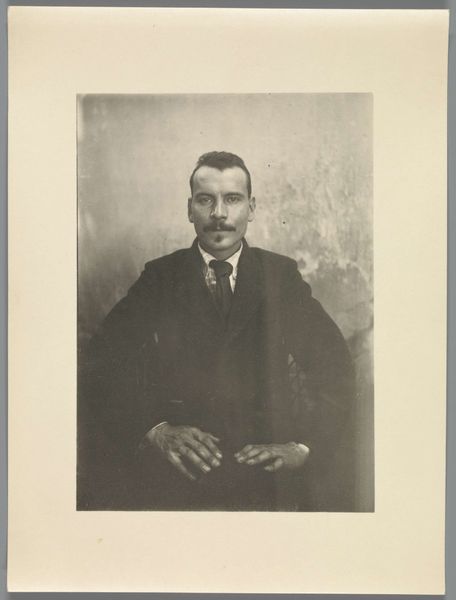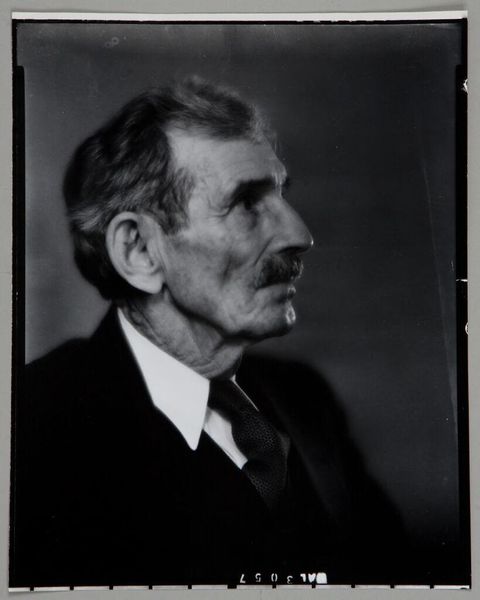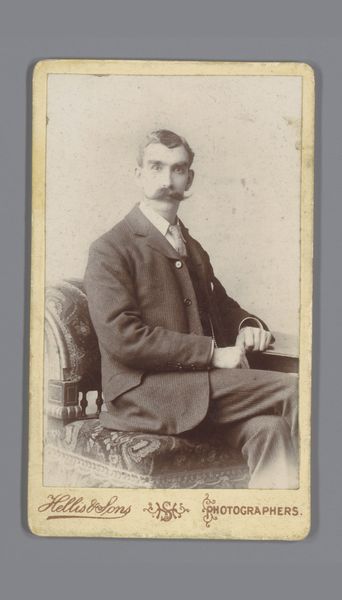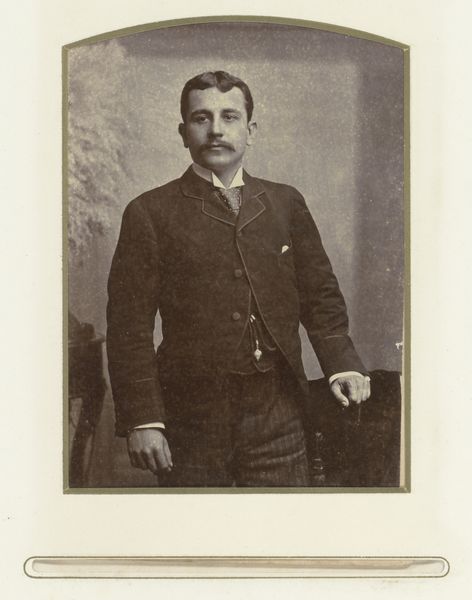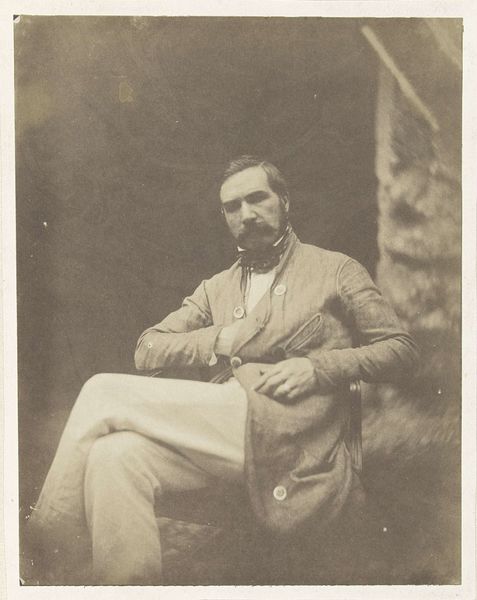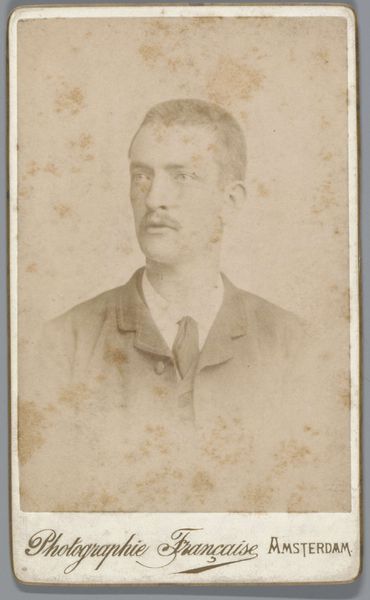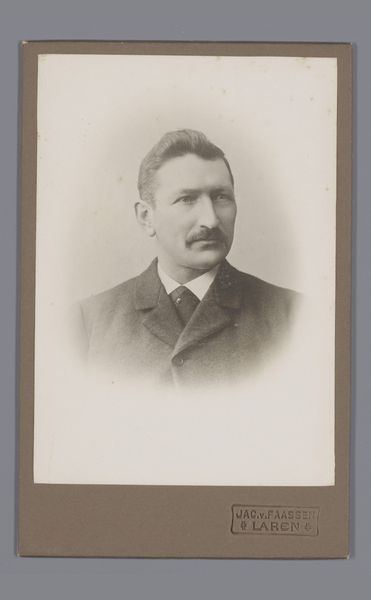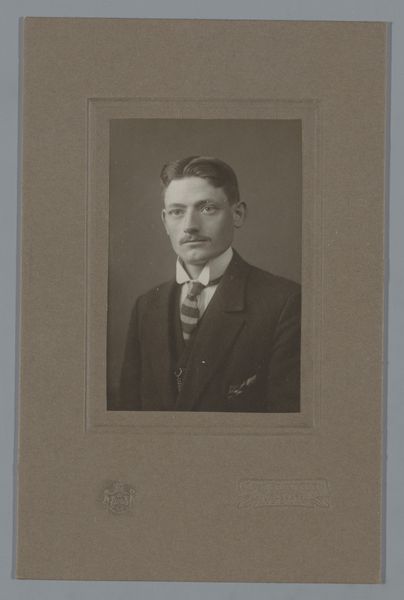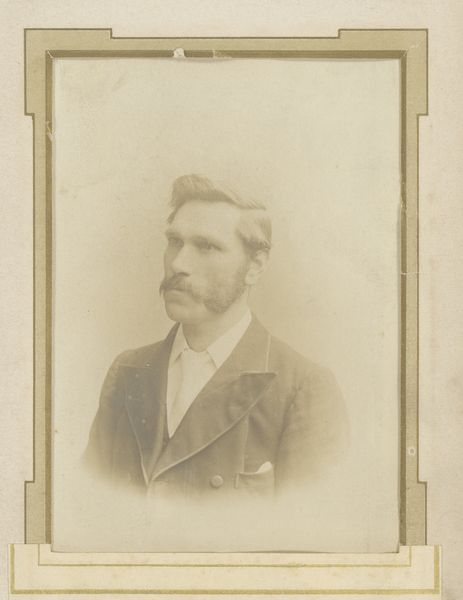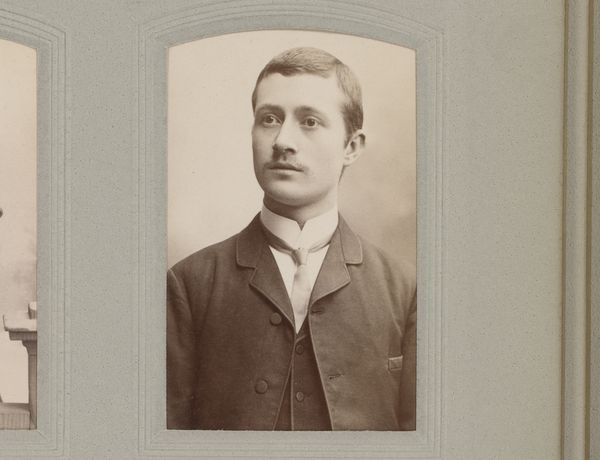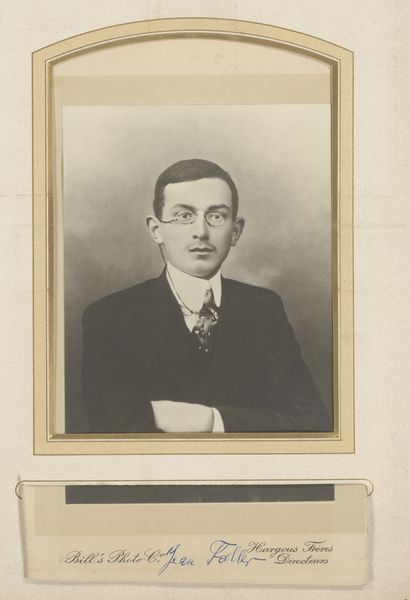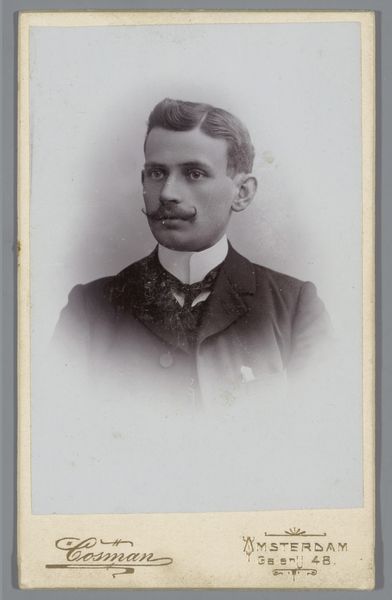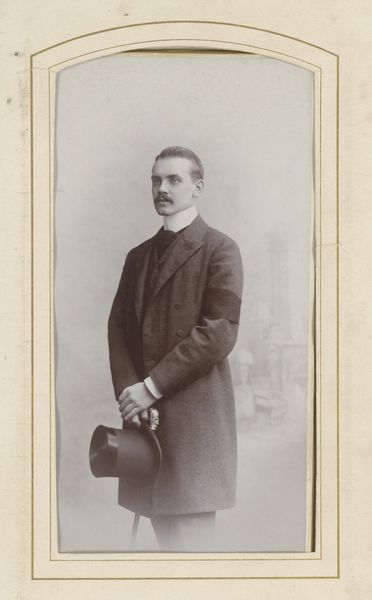
photography, gelatin-silver-print
#
portrait
#
photography
#
gelatin-silver-print
#
portrait photography
#
realism
Copyright: Public Domain
Editor: This gelatin-silver print, titled "Frank MacDowell" by Thomas Eakins, from the 1880s, has an undeniably captivating, somewhat stern presence. What do you see in this portrait, especially considering Eakins’ broader artistic practice? Curator: For me, this portrait isn't simply a depiction of an individual but also a commentary on the social constructs of masculinity in the late 19th century. The sitter's composed gaze and meticulous grooming, combined with the photographic realism of the medium, highlight the era's emphasis on outward appearances and societal roles. Editor: So you think it's commenting on those roles? I’m not sure, what do you mean? Curator: Consider how photography at this time, even more so than painting, was believed to capture reality 'as it is'. Eakins choice to use photography, then, presents Macdowell, or rather a *representation* of Macdowell as inherently ‘authentic.’ The stiff pose and formal wear underscore societal expectations. What isn't being shown is just as telling as what is. The gaze demands respect, doesn’t it? But what expectations are built into that dynamic? And who benefits from it? Editor: I see what you're saying – the expectations built into that portrayal, and who benefits from them. How interesting to think about that kind of gaze back then, and now! Curator: Exactly. And reflecting on those dynamics – of gaze, power, and representation - allows us to engage critically with both historical and contemporary understandings of identity. Hopefully you can take these things forward in your research now too.
Comments
No comments
Be the first to comment and join the conversation on the ultimate creative platform.
